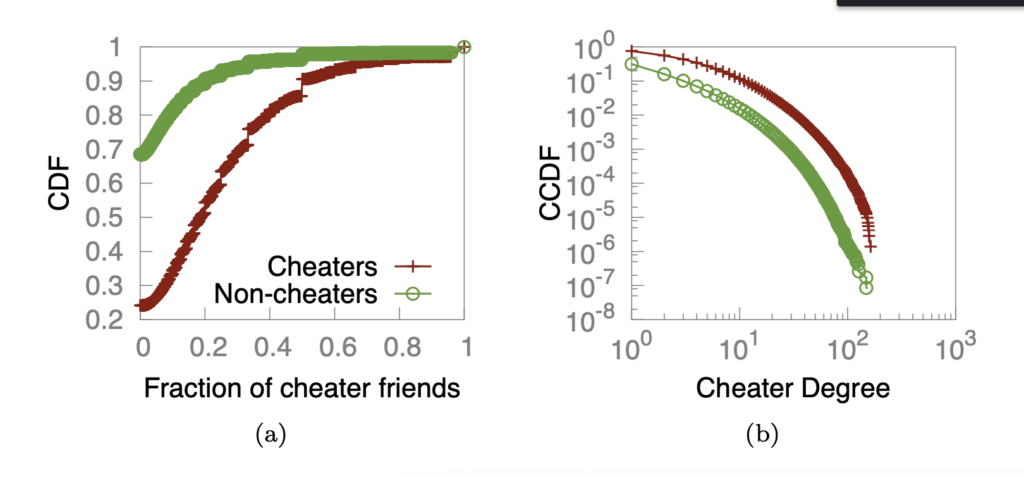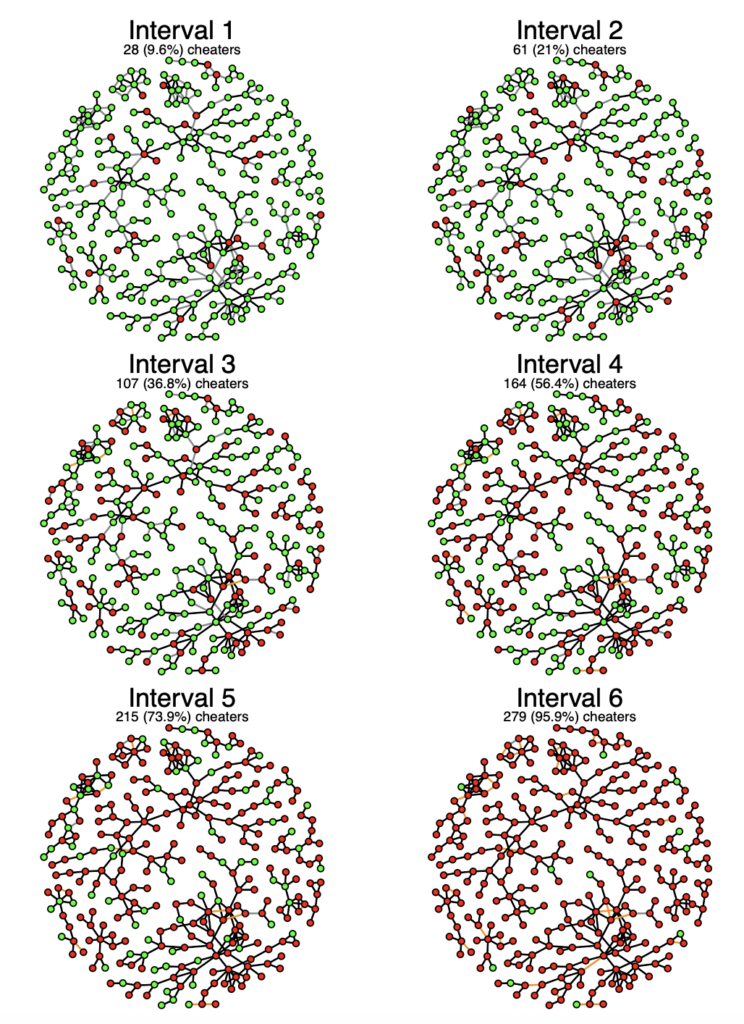If you have ever played an online multiplayer game, you probably have played against or with a cheater. Cheating in Video or PC games isn’t a new phenomenon. In this article, we are going to analysis the social network of cheaters and find out some interesting behavior of cheater’s social network compare to non-cheaters.
Usually the behavior of an individual is heavily influenced by his social ties. With this assumption, we believe that cheaters should tightly connected to other cheaters in the social network. In addition, cheating in a game often treated as an unethical behavior, and majority of the players do not like to play with a cheater. Therefore, non-cheaters should have a different social network with cheaters.
To understand the position of cheaters in the social network, we analysis the Steam Community (A social network platform for steam users i.e. the player who plays the games that sales on Steam)

By looking at the commutative distribution (CDF: f(x) = P(X <= x)) of fraction of cheater friends and Complementary Cumulative Distribution (CCDF: f(x) = P(X > x)) of cheater degree (number of friends are cheaters). We can easily see that nearly 70% of non-cheaters have nearly no friends with cheaters, while 70% of cheaters have at least 10% cheaters as their friends. In addition, cheaters have overall higher probability friends with cheaters than non-cheaters.
We noticed that the cheaters often propagated via direct influence from other cheaters.

This figure shows that the spread of cheating behavior of monitored user group in Steam over a 1-month period, split into 6 intervals. The red node represents cheaters and the green node represents non-cheaters. Edges represents the friendship between users. Gray are newly formed friendship in the future interval, and orange are the edges that have been deleted from previous interval.
The graph shows that how rapidly the influence can be, out of the 279 cheaters at the end of the Interval 6, only 28 were cheaters a month before, resulting clusters of cheaters in the network.
As we can see that cheaters seem to form another social network with other cheaters that embedded in the overall player community. Also, even cheaters are often an anti-social behavior, it seems like it can also rapidly influence other non-cheat players to cheat.
Reference:
BLACKBURN, JEREMY, et al. Cheating in Online Games: A Social Network Perspective. https://www.cse.usf.edu/dsg/data/publications/papers/cheating_TOI.pdf